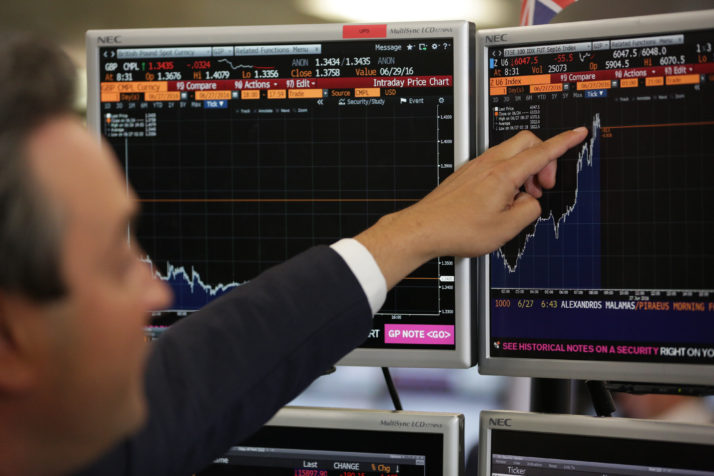European markets are starting the week on a positive note, with indices up close to 1% on the back of softer commodity prices and confirmed talks between Ukraine and Russia.
Broadly speaking, stock markets remain in a consolidatory phase and have been for almost a couple of weeks but they’ve certainly received a mild boost at the start of the week. Whether that can be sustained or not may well depend on whether we can see progress in talks this week.
Naturally, further talks between the two countries don’t guarantee we’ll see any substantial progress as we’ve seen all too often in recent weeks. But the fact that they’re still happening offers hope that we’re heading in the right direction and concessions we’ve seen on Ukraine’s side in regard to NATO membership could really help that along. Assuming Russia is truly intent on a deal and leaving Ukraine, of course, which many are sceptical about.
A certain portion of the declines we’re seeing in the commodity space, most notably oil, can be attributed to the lockdowns we’re seeing in China and the impact they’ll have on both activity and demand in the near term.
While that can be viewed as a positive from an oil perspective considering the supply/demand imbalance and very high price, it isn’t a sustainable solution, nor a desirable one. From a global economic perspective, it’s giving with one hand while taking from the other considering the supply chain issues that we’ve seen on the back of lockdowns over the last couple of years.
A key consideration for investors remains central bank tightening cycles, most notably that of the Federal Reserve. We’re seeing a lot more talk of inverted yield curves and while that doesn’t appear to be making investors particularly nervous as it did a few years ago, it could start to creep in more if the 2’s and 10’s invert as they did then.
Oil slides ahead of OPEC+ meeting
Oil prices are down more than 7% at the start of the week, wiping out almost all of last week’s gains, as ceasefire talks and Chinese lockdowns take some of the pressure out of the market. Prices have become very elevated and are susceptible to further spikes as Europe looks to pivot away from Russia and sanctions bite.
Reports that OPEC+ is likely to stick to the May output increase plan – 400,000 barrels per day again – when it meets on Thursday have not only not triggered a paring of losses in crude but appear to have contributed to the declines. The move has rebounded somewhat but not entirely.
Gold retains its appeal as it slips at the start of the week
Gold is off around 1% on Monday which is to be expected against the backdrop of improved sentiment and a higher dollar. The yellow metal is likely to remain well supported in the current environment but has made steady gains in recent sessions and is simply giving a portion of that back. Even so, between talk of inflation, recession risks, and higher commodity prices, I can’t see gold losing its appeal too much any time soon.
Things may be looking up for bitcoin
Bitcoin is flying today after breaking through $45,500 resistance and taking off. Buoyed by improved sentiment, the cryptocurrency managed to break a level that has proven a key rotation point since the start of the year. The ascending triangle it traded in following that was technically bullish and the breakout confirms that.































